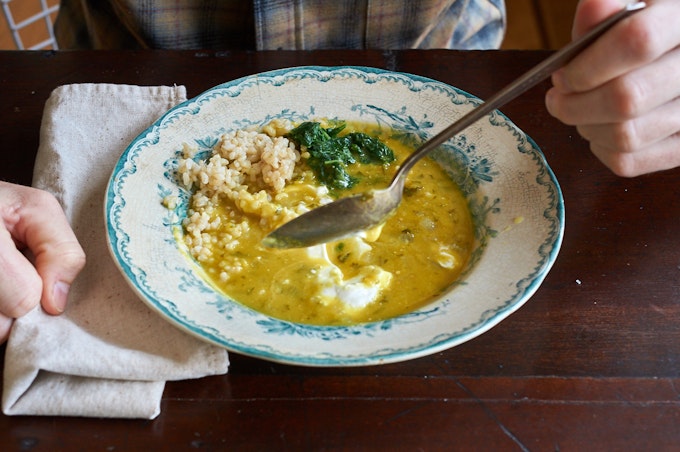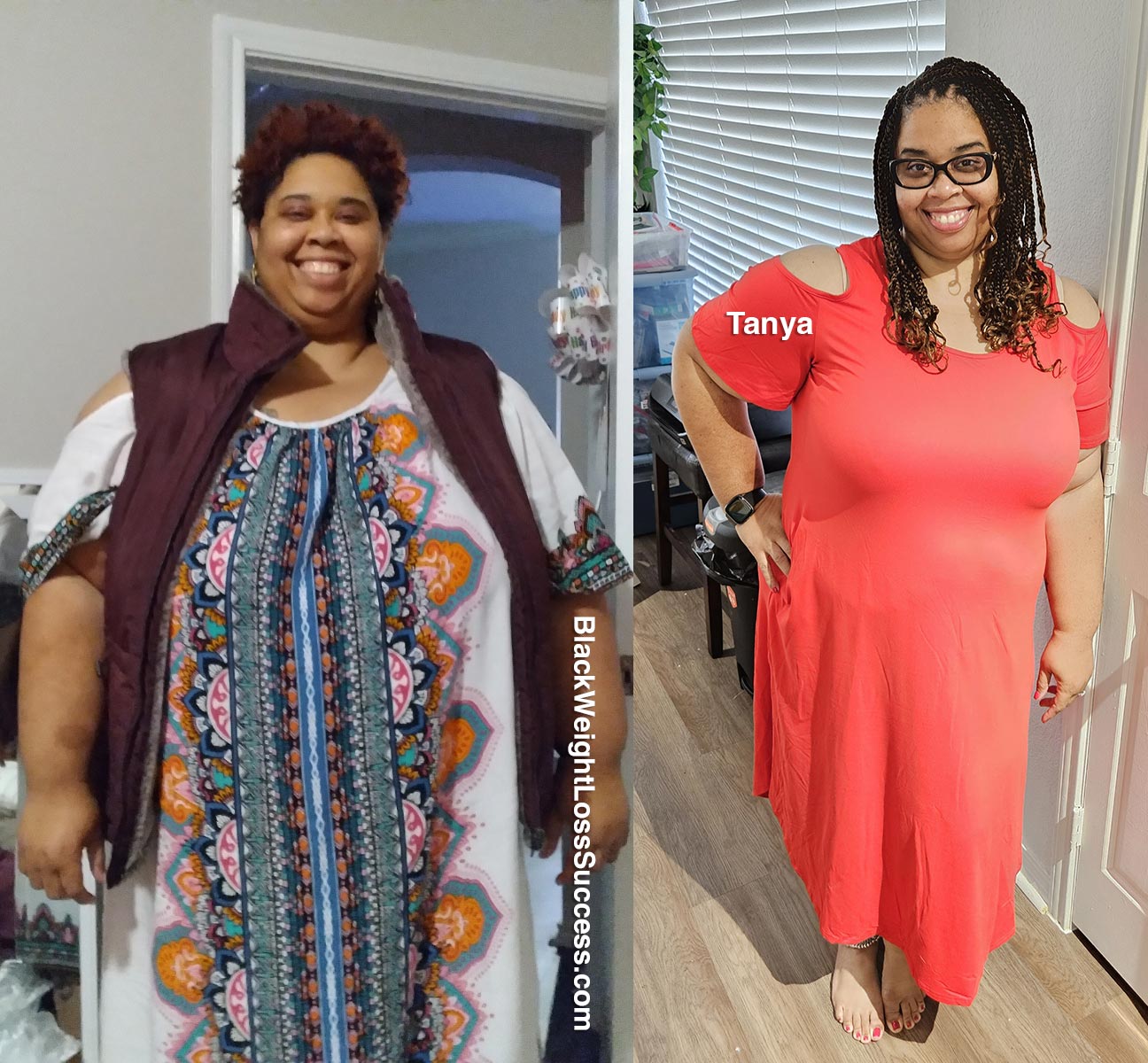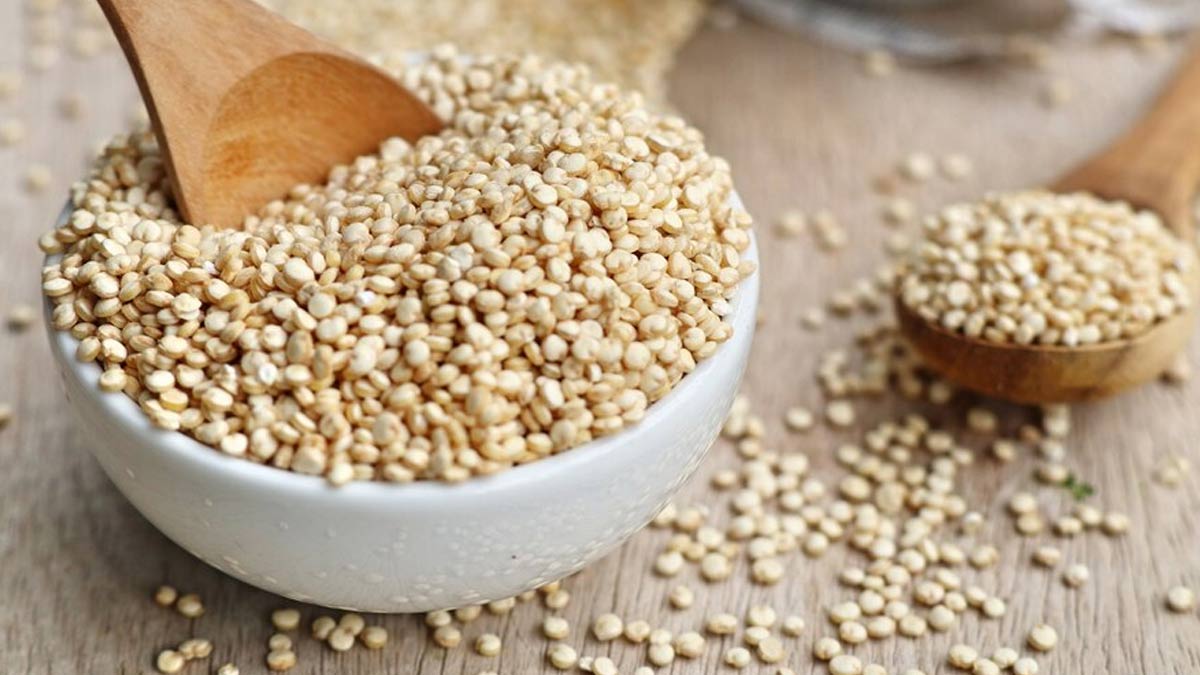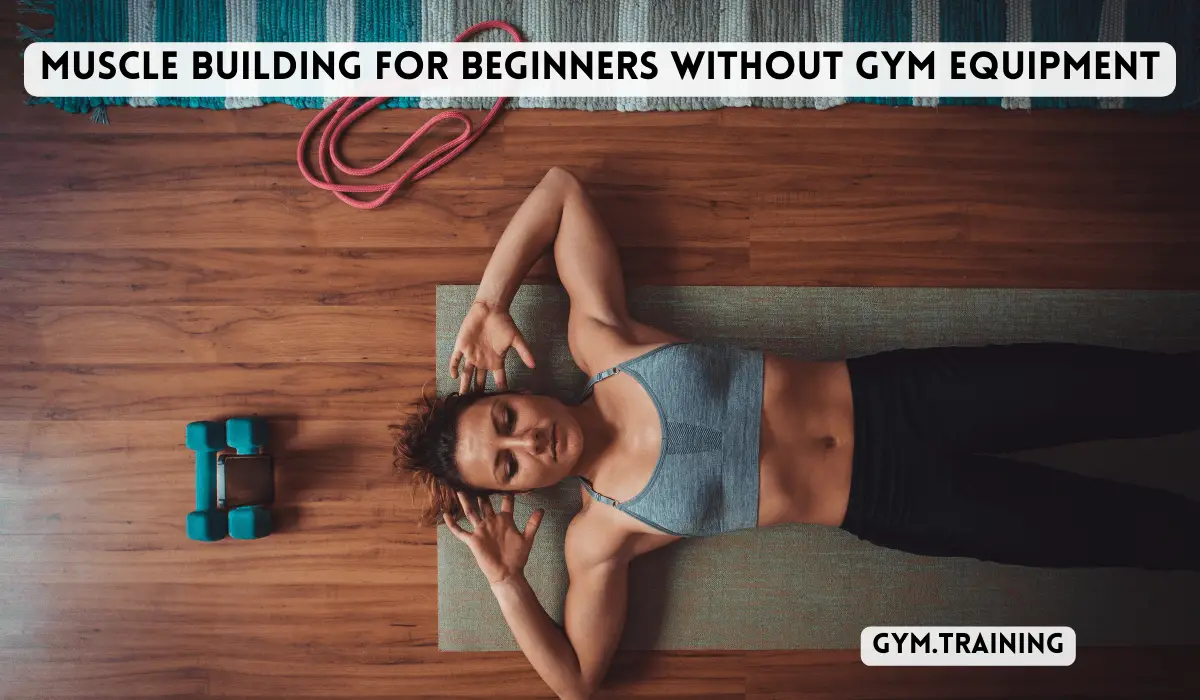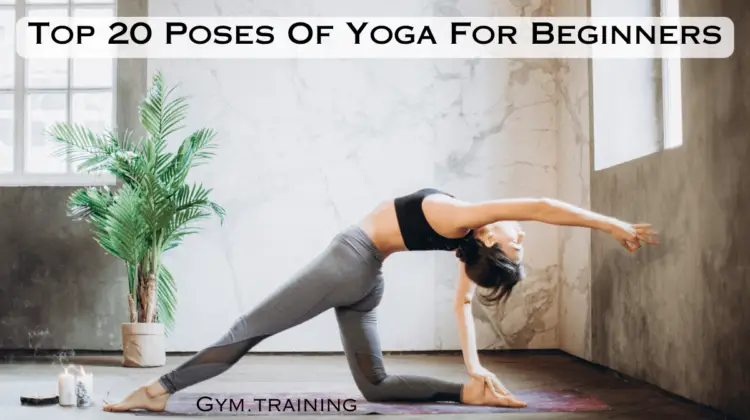
Yoga, an ancient practice that originated in India, has gained widespread recognition for its holistic benefits. Yoga for beginners combines physical postures, breathing techniques, and meditation to foster a harmonious connection between the body, mind, and spirit.
Before delving into the world of yoga and yoga for beginners, it’s essential to prepare adequately. Procuring the necessary equipment, such as a comfortable yoga mat and suitable attire, sets the stage for a fulfilling practice.
Choosing the right yoga style that aligns with one’s preferences and physical abilities is crucial, as is finding an experienced instructor who can guide and support the journey.
In a world where stress and imbalance have become the norm, the benefits of yoga have emerged as a beacon of hope for individuals seeking harmony and wellness.
Through its comprehensive approach to nurturing the body, mind, and spirit, yoga has proven to be a transformative practice, empowering individuals to lead healthier, more meaningful lives.
Its enduring impact on physical health, mental well-being, and spiritual growth continues to inspire people worldwide to embrace the path of yoga for a more fulfilling and enriched existence
Key Points Of Yoga For Beginners
1. Breathing Techniques
Breath control lies at the heart of a successful yoga practice. Understanding the importance of controlled breathing is crucial for yoga for beginners and it facilitates a more profound connection between the body and mind.
Exploring various Pranayama techniques, such as Nadi Shodhana (alternate nostril breathing) and Kapalbhati (skull-shining breath), enhances overall well-being and cultivates inner peace.
2. Yoga and Meditation
Integrating meditation into the yoga routine amplifies the practice’s benefits. Its more beneficial to yoga for beginners to get started with the basics.
Incorporating moments of stillness and mindfulness fosters mental clarity and emotional stability. Engaging in meditation during yoga sessions deepens the connection with the self and encourages a heightened sense of awareness.
For More Details Read: 6 Most Effective Meditation And Breathing Exercises
3. Basic Yoga Poses
Several foundational yoga poses serve as the building blocks especially to yoga for beginners practice. The Mountain Pose, emphasizing alignment and balance, forms the base for many other poses. The Downward-Facing Dog Pose strengthens the entire body and promotes flexibility.
The Warrior Pose instills a sense of confidence and stability, while the Child’s Pose allows for deep relaxation and restoration. The Corpse Pose serves as a final relaxation pose, promoting a sense of tranquility.
4. Tips for Beginners
Embarking on a yoga journey requires patience and perseverance. Setting realistic goals that cater to individual capabilities prevents undue strain and discouragement.
When it comes at yoga for beginners, maintaining a consistent practice, even if it’s for a short duration daily, facilitates progress and cultivates a deep-rooted connection with the practice.
Benefits Of Yoga
Yoga, an ancient practice that originated in India, has garnered worldwide recognition for its multifaceted benefits. Beyond being a physical exercise, yoga encompasses a holistic approach to overall well-being, nurturing the body, mind, and spirit.
Its profound impact on one’s health and lifestyle has made it a popular choice for people seeking a balanced and harmonious life.
1. Physical Benefits
Yoga serves as a catalyst for enhancing physical well-being. Through yoga for beginners is a practice of various postures, it fosters flexibility, improving the range of motion in muscles and joints. Moreover, it aids in building muscle strength, leading to improved balance and a better posture.
While yoga for beginners benefits with regular practice, it has also been linked to increased energy levels and vitality, as it promotes better blood circulation and boosts overall body function.
2. Mental Benefits
In today’s fast-paced world, mental health has become a crucial aspect of overall wellness. Yoga for beginners will offers a sanctuary for the mind, fostering mental clarity, inner peace, and emotional stability.
The combination of deep breathing techniques and mindful meditation during yoga practice promotes relaxation, reduces stress and anxiety, and enhances emotional resilience. It encourages practitioners to cultivate a positive outlook, fostering a greater sense of self-awareness and self-acceptance.
3. Spiritual Benefits
Beyond the physical and mental aspects, yoga for beginners delves into the realm of spirituality, allowing practitioners to explore their inner selves on a profound level.
Through the integration of meditation and mindfulness, it enables individuals to connect with their inner consciousness and attain a sense of spiritual awakening. This spiritual journey often leads to a deeper understanding of the self and the world, fostering a sense of peace and contentment.
4. Overall Well-being
The holistic nature of yoga contributes significantly to the overall well-being of an individual. By promoting a balanced connection between the body, mind, and spirit, it creates a harmonious equilibrium that transcends physical fitness.
The synergy between the physical, mental, and spiritual benefits of yoga for beginners gives and nurtures a sense of completeness, fostering a healthier lifestyle and a more profound sense of purpose and fulfillment.
Also Read: Top 10 Most Effective Mat Pilates Exercises
20 Poses Of Yoga For Beginners
Yoga, a time-honored practice that promotes physical and mental well-being, encompasses a range of poses designed to cultivate strength, flexibility, and inner peace. Yoga for beginners, starting with fundamental yoga poses is essential to establish a solid foundation and develop a comfortable practice.
Below are 20 poses of yoga for beginners, along with instructions on how to perform each pose correctly.
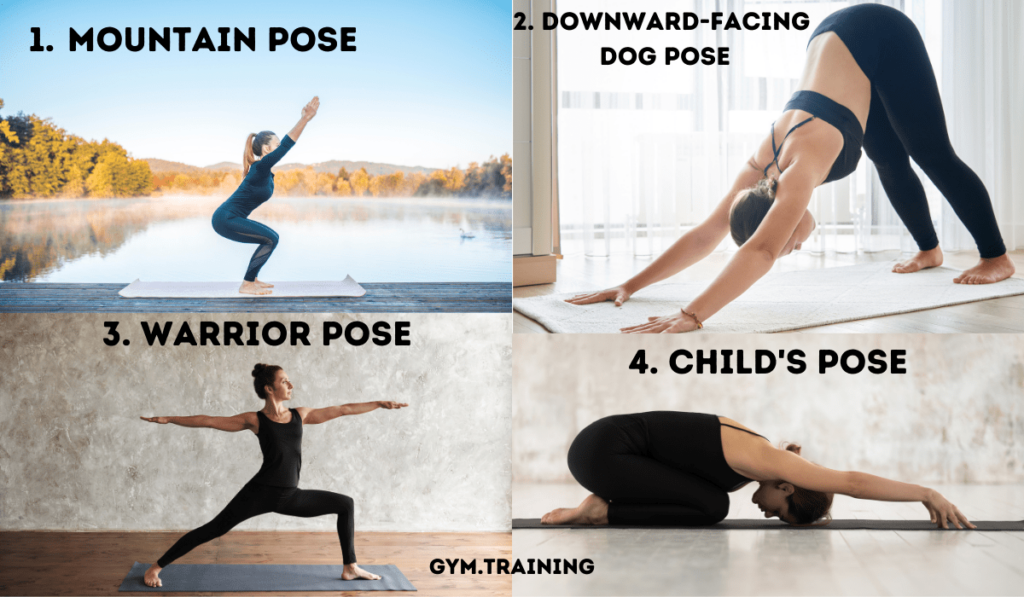
1. Mountain Pose (Tadasana)
- Stand tall with your feet hip-width apart or together.
- Press feet firmly into the ground, engaging thigh muscles.
- Roll shoulders back and down, extending arms by the sides.
- Keep the body aligned and gaze forward.
2. Downward-Facing Dog Pose (Adho Mukha Svanasana)
- Begin on hands and knees, forming a tabletop position.
- Lift hips up, straightening the legs and arms.
- Press palms and heels firmly into the ground.
- Keep the head between the arms, forming an inverted V shape.
3. Warrior Pose (Virabhadrasana)
- Step back with one foot at a 45-degree angle.
- Bend the front knee at a 90-degree angle, keeping it aligned with the ankle.
- Extend arms parallel to the ground, reaching in opposite directions.
- Gaze over the front fingertips, maintaining a strong core.
4. Child’s Pose (Balasana)
- Kneel on the floor, sitting back on the heels.
- Fold the torso forward, resting it on the thighs and forehead on the mat.
- Stretch arms in front or alongside the body for a gentle stretch.
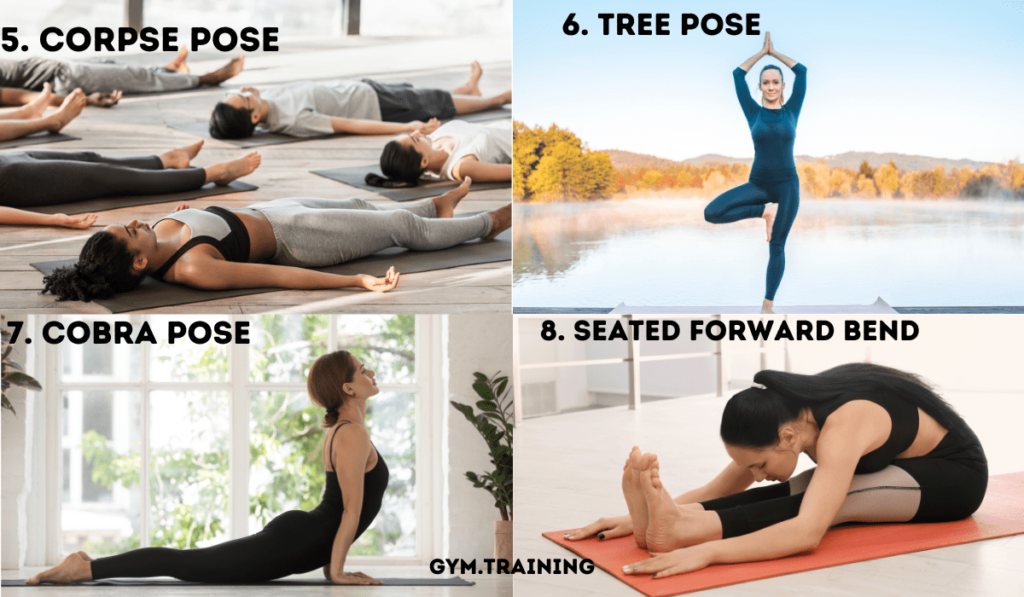
5. Corpse Pose (Savasana)
- Lie flat on the back, arms relaxed by the sides, palms facing up.
- Close the eyes and focus on deep, rhythmic breathing.
- Relax the entire body, releasing any tension.
6. Tree Pose (Vrksasana)
- Stand tall, shifting weight onto one leg.
- Place the opposing foot’s sole on the inner thigh or calf.
- Find a focal point and bring hands to prayer position at the chest.
7. Cobra Pose (Bhujangasana)
- Lie on the stomach, placing hands under the shoulders.
- Press the tops of the feet and thighs into the ground.
- Inhale, straightening the arms to lift the chest off the ground.
- Keep the shoulders relaxed, and gaze forward.
8. Seated Forward Bend (Paschimottanasana)
- Sit on the mat with legs extended in front.
- Exhale and fold forward after inhaling and lengthening the spine.
- Reach for the feet or shins, keeping the back straight.
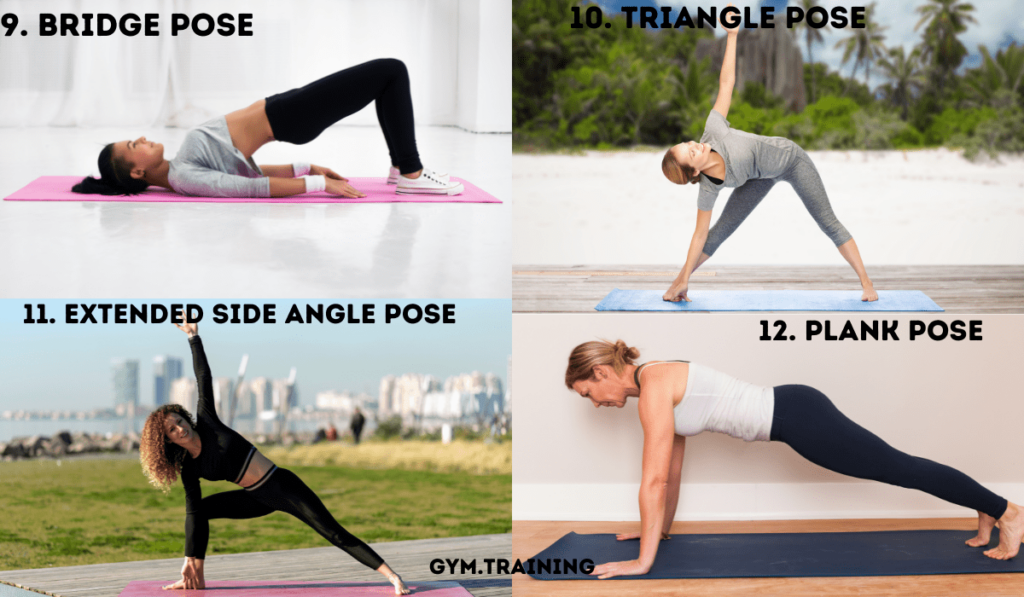
9. Bridge Pose (Setu Bandhasana)
- Lie on your back with your knees bent and your feet hip-width apart.
- Press feet and arms into the ground, lifting the hips up.
- Clasp hands under the back, rolling shoulders underneath.
10. Triangle Pose (Trikonasana)
- Stand with legs wide apart, turning one foot out and the other slightly in.
- Extend arms parallel to the ground, reaching in opposite directions.
- Bend at the waist, reaching one hand to the ankle and the other to the sky.
11. Extended Side Angle Pose (Utthita Parsvakonasana)
- From Warrior II, place the front forearm on the thigh.
- Extend the other arm overhead, forming a straight line from the back foot to the fingertips.
- Keep the torso long and gaze upward.
12. Plank Pose
- Begin by doing a push-up with your hands directly beneath your shoulders.
- Engage the core and keep the body in a straight line from head to heels.
- Hold the position, focusing on steady breathing.
Also Read: Barre vs Pilates: What Should You Choose?
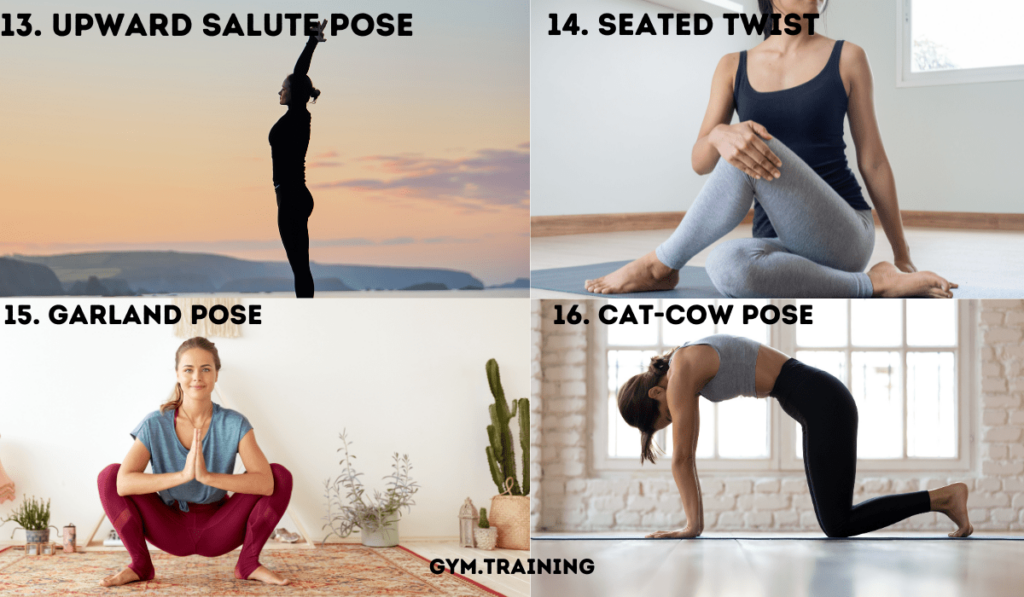
13. Upward Salute Pose (Urdhva Hastasana)
- Stand tall, reaching arms overhead with palms facing each other.
- Engage the thighs and lift the chest, lengthening the spine.
- Gaze up, keeping the shoulders relaxed.
14. Seated Twist (Ardha Matsyendrasana)
- Sit on the mat with legs extended.
- Bend one leg and cross it over the other, planting the foot on the floor.
- Twist the torso in the direction of the bent knee, placing the opposite elbow outside the knee.
15. Garland Pose (Malasana)
- Squat down with feet wider than hip-width apart.
- Bring palms together at the chest, pressing elbows against the inner thighs.
- Lengthen the spine and gaze forward.
16. Cat-Cow Pose (Marjaryasana-Bitilasana)
- Begin on your hands and knees, with your wrists under your shoulders and your knees under your hips.
- Inhale, arching the back and lifting the tailbone for Cow Pose.
- Exhale, rounding the back and tucking the chin for Cat Pose.
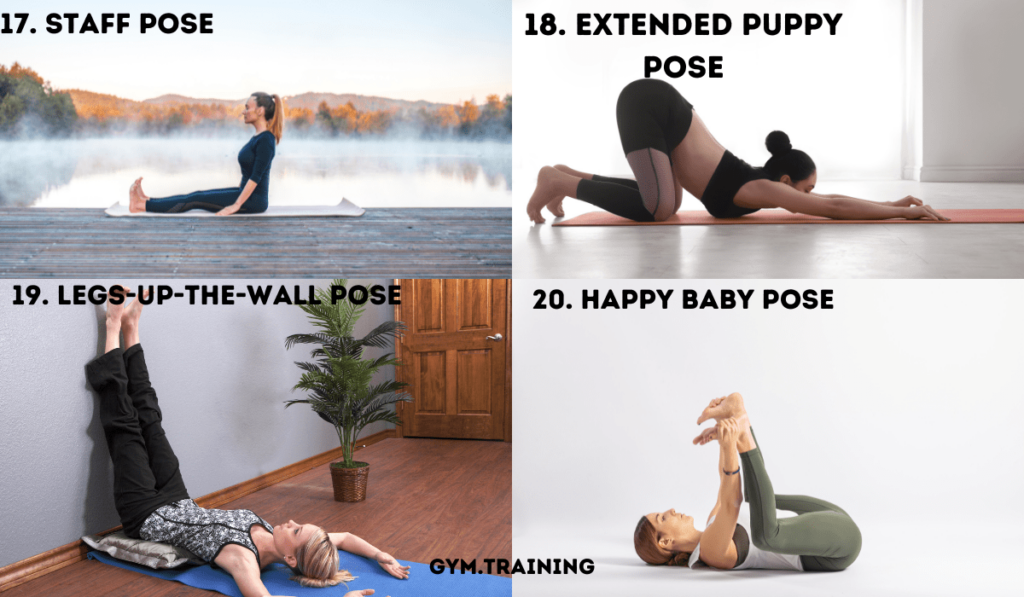
17. Staff Pose (Dandasana)
- Sit on the mat with legs extended forward, feet flexed.
- Place hands beside the hips, fingers pointing forward.
- Lengthen the spine and engage the thigh muscles.
18. Extended Puppy Pose (Uttana Shishosana)
- Start in a tabletop position, then walk hands forward, lowering the chest toward the mat.
- Keep the hips over the knees and extend the arms forward.
- Rest the forehead on the mat and relax the shoulders.
19. Legs-Up-the-Wall Pose (Viparita Karani)
- Sit with one hip close to the wall.
- Lie back and extend legs up against the wall.
- Relax the arms by the sides and focus on steady breathing.
20. Happy Baby Pose (Ananda Balasana)
- Lie on the back and bring the knees toward the chest.
- Grab the outside edges of the feet, opening the knees wider than the torso.
- Gently rock from side to side, releasing any tension in the lower back.
Integrating these poses of yoga for beginners into a daily routine can help establish a strong foundation for a fulfilling yoga practice. Remember to approach each pose with patience and mindfulness, focusing on proper alignment and breathing.
By gradually incorporating these yoga for beginners poses into your practice, you can begin to experience the numerous physical and mental benefits that yoga has to offer.






